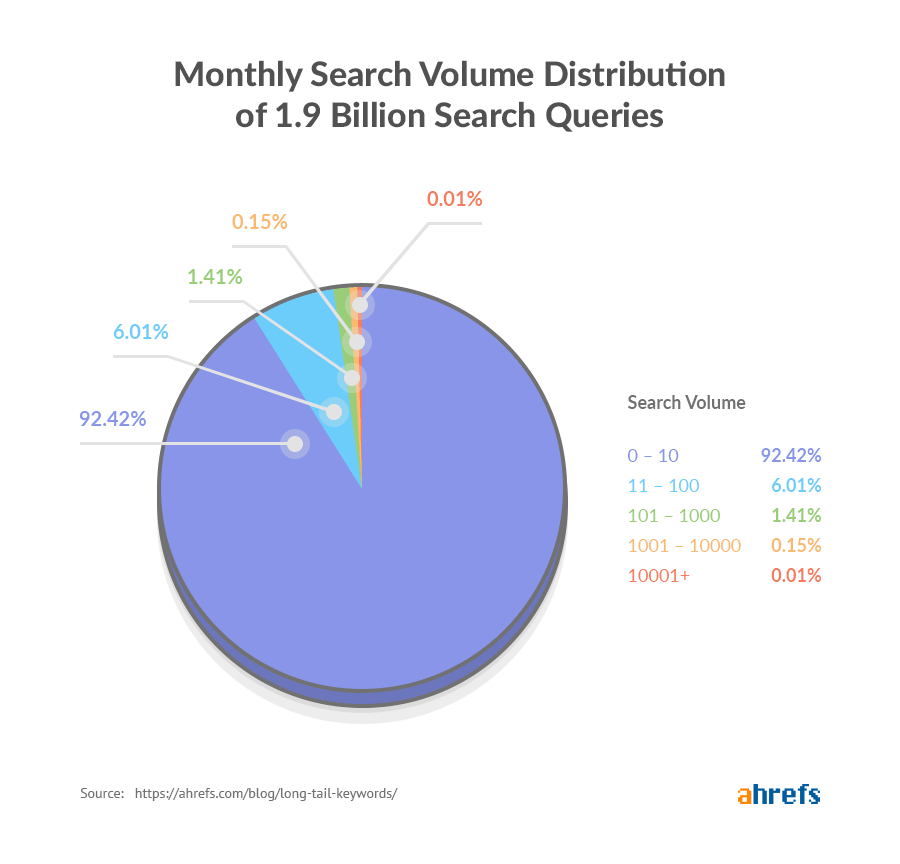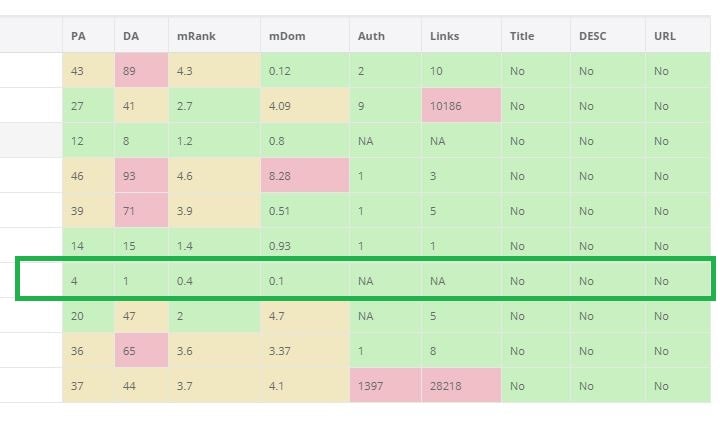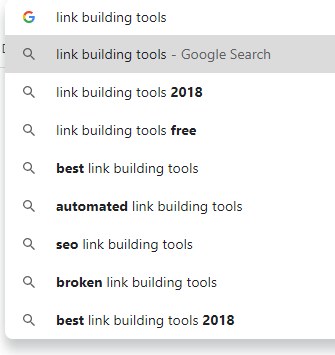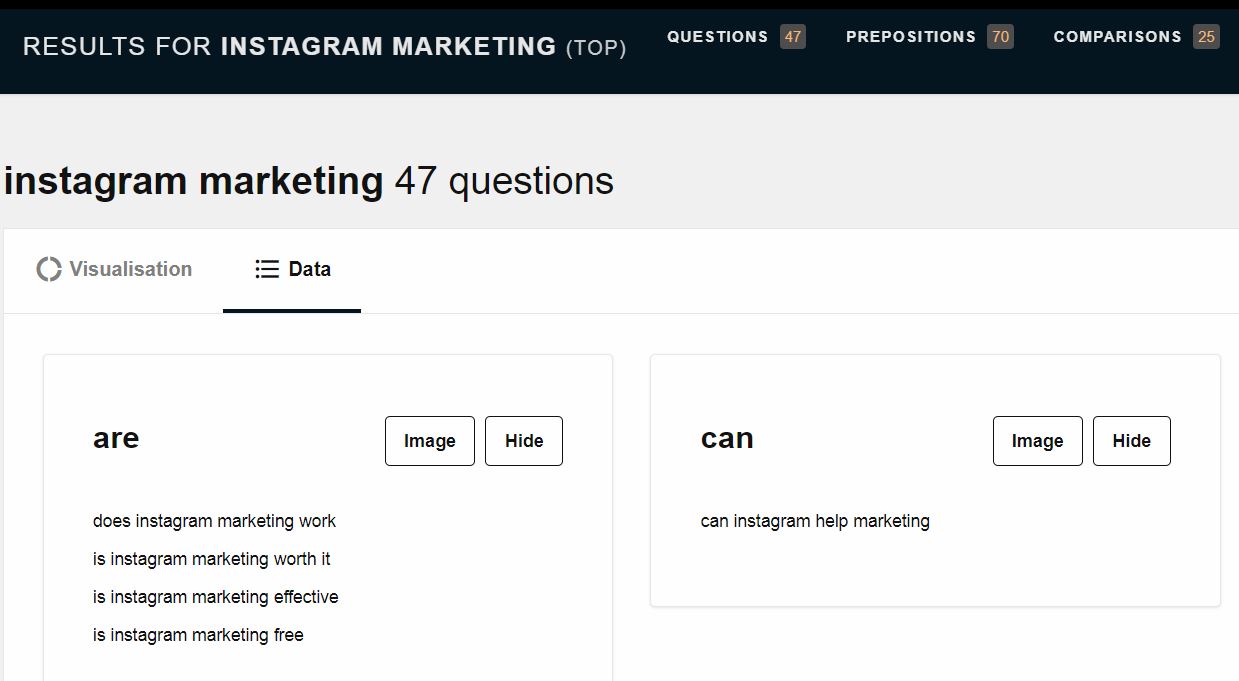What Are Long Tail Keywords and Why Should You Care?
A long tail keyword is a three to five word keyword phrase that aims to capture targeted search traffic. Long tail keywords get less search traffic but common have high conversion rates, as they are far more specific. Quite often long tail keywords are very profitable search traffic. The general idea is you are trying to attract visitors are late in the buying process and are prepared to buy with the right information. Hence, these long tail keywords have a high conversion rate but low search volume.
Let’s look at an example. “Nike running shoes for men” is a 5-word example of a long tail keyword. In contrast, “running shoes” is a short tail keyword. If you looking for someone ready to buy shoes, in this case the long tail keyword is someone about ready to buy with the right information presented to them.
This is a good time to mention that just because a keyword is long doesn’t necessarily make it long tail. What usually defines a long tail keyword is the search volume, competition, and conversion rates.
What Exactly Makes a Keyword Long Tail?
Generally, keywords are long tail if they are less common. The reason they got the term long tail and not some other general term actually comes from statistics. In statistics, Long Tail is a term relation to the distribution and how many occurrences they have in relation to the head, or more common part.
Those terms sound complex, but looking at the below graph, the yellow part are the head terms, or very common searches on the internet. The green section is the long tail keywords section. These are the terms with much less search volume. The long tail terms are your terms that are very specific and might only have a couple of dozen searches a month, but they are laser targetted. These are the terms like “buy nike mens running shoes”. The customer is looking very specifically for something and if you can fill that need you get to pocket some cash.
This is how the search demand curve appears when you map out keyword competition vs search volume.
You might wonder now how many searches a month these long tail keywords really get. Ahrefs reported recently that 92% of all keywords get 10 or fewer searches per month, making them all long tail by definition.
The key to a profitable long tail keyword is to meet up with the customer right about the time they are ready to purchase:
- The customer hears about a product on a forum or from an email.
- The customer looks up more information about the product and the concept in general.
- The customer looks up reviews and opinions on the product.
- The customer decides to purchase today. <— This is where you want to have your long tail keyword
- The customer buys the product.
Why are Long Tail Keywords Less Competitive?
While that satisfies the search volume part of the long tail keyword definition, there also needs to be less competition. While for some keyword phrases like “instagram marketing” will have a lot of competition and search volume, if you look at a phrase like “instagram marketing strategies for small business in the philippines”, that is a fairly specific phrase. In Long Tail Pro it shows up as a zero monthly searches with a competition difficulty level of 33. If you search this term in Google, you’ll see that the first few entries are social media marketing in the Phillipines followed by general social marketing places. With a well-written article, you could easily slide into the top 2-3 places and you’re up and you’ll get some of the searches coming to your site. By the way, below about 50 monthly searches they usually just round off to zero so in this case just ignore the search volume number.
At this point, a keyword research tool can help you find competition but it’s still fairly subjecting. The competition difficulty level is based off of the Domain Authority(DA) and Page Authority(PA) of the top search results. However, it usually takes a person looking at the search results to realize that while the pages themselves are strong, they are not entirely focused on the search terms so they fit the bill relatively but they can be beaten with an article focused on that particular term.
While this wasn’t always the case, it is more and more. In fact, beginning with the January 2020 updates, Google is getting better at telling which results answer the search request the best.
As an example, let’s look at a phrase “how short can i cut my cats nails”. It’s definitely a long tail keyword.
If you search it on Google, right now here is the list of domains that come back, the top entry is for PrettyLittercats.com. They rank above pets.webmd.com and well above petco.com sitting at #10. The fact is, if your website page fits the query well and focuses on that topic answering the searcher’s intent, and your site in general has a lot of cat info, you have a very good shot at the top entries. Just be complete, and remember that each new articles is making your site the authority more and more.
Still not convinced?
I have a site I started ( I won’t give away what my main topic is) a few months ago, and my article #22 was well written but nothing like a 10,000 word article. It did, however, answer the search term specifically instead of being just general info. Having your entire article focus around the topic and not getting off on a tangent is how you win. This is a screenshot from part of KeySearch. My site has a Page Authority of 4 at that point and a Domain Authority of 1. So fairly typical of a new site with few if any links.
It’s a term that gets maybe 50 monthly searches at best and is a difficulty score of 25. What I want to show you here is that it is in fact ranking above sites with authority far, far above my site’s and yet I outrank them. With some work I’m sure the article could move up 2-3 spots.
What it means is that if you pick out long tail keywords and write articles around them, you can have lots of small wins. In this case, it’s for a term where the affiliate commission would net me roughly $12-14 per sale and the term is the searching looking for something very specific and likely ready to buy. 6-7 of these customers per month could net me $100/month by itself.
$100 a month isn’t ground-breaking, but repeat it 20 times and you’re talkign $2000/month which is pretty significant.
As a byproduct, the more articles you have, the more you are the authority so your future articles will help your older ones move up as well. It’s a win-win.
How to Find Long Tail Keywords?
At this point, you’re probably wondering how you find these elusive long tail keywords. It’s a fair question and it’s something you do better with practice.
1. Google Autocomplete
If you just go to google.com and start typing a phrase, it will choose many others to suggest. These are based off of the phrase you choose, which in this case is “link building tools”. These are actual terms that people do in fact search for, so if you choose one of these search queries to write an article on it, you will be writing an article for an active term. Chosen right, a search query can make you money day after day without further work.
Pro Tip: You can also start to type a new word and while you are typing the word new suggestions will pop up. You can direct the results you get in this way.
2. Answer The Public
AnswerThePublic.com is one of those hidden gems that I use all the time. You just put in a term and it gathers the searches that people are actually doing in Google. It basically is an easier way to get the data from #1 but you have less control over what it gathers.
What makes it even easier is you can download the CSV file and work with it from there:
3. Keyword Research Tools like Long Tail Pro
There are also keyword research tools that are made just so you can make the most of your time. It’s always a time and money trade-off so the key is to pick wisely. In this case, I like Long Tail Pro because it’s very reasonably priced and it’s been around for quite awhile.
When you want to find some keywords, just put in a term and voila:
You get a quick set of results. In this case I was looking for keyword ranking tools and have it filtered down rather narrowly to show the variety of information available. You get a quick search volume as well as the competition. I still followup by hand no matter what tool and search the phrase manually to see the competition but getting an initial value is very handy. LTP also highlights the Keyword Competition (KC) to let you know which ones will be attainable by your site easily and which have more work to get first page on.
I tend to use the keyword tool Long Tail Pro and Answer The Public to find a list of long tail keywords and then I narrow down by hand by looking at the competition to see how specific their pages are and if they answer the search term.
I put together a review on Long Tail Pro if you’d like to read a little more about this tool beyond this blurb.
Additionally, Moz has a great writeup of keyword research in general. When combined with long tail keyword research, it can become an extremely powerful tool.
How to Turn Long Tail Keyword Traffic into Money?
This is the part that many people get wrong. You want to tie in your article to be the #1 result for the customer’s search ideally.
Make sure the first thing you do is address the long tail keyword. Make sure your article or page centers on the topic and make sure it addresses the intent of the search.
Within your page, you can then suggest specific products that will address what they are looking for, or perhaps suggest the best price and place to get it. This would be an example of affiliate sales and the page itself is part of affiliate marketing.
First you need to make sure to get customers before you can capitalize on having the customer. Perhaps you are a business, and on your page you mention the product is 10% today or something similar.
Just remember first and foremost to address the needs of your customer or you won’t get the first page placement on any of the search engines.
The key to getting better at finding and landing good long tail keyword placement is getting started. Over time you will better at writing and reading what the user needs, and you will get better at finding the keywords that are worth the most to you. The key is to just get moving to succeed.
Last Minute Tips
Once you pick the right keywords, it’s time to get that article together and hit a home run.
- Make sure your website loads as fast as possible. In this day of mobile-first indexing loading speed is a critical factor on how your website ranks.
- Optimize your on-page SEO as much as possible. It’s fully in your control and it’s the first step to getting a good-ranking webpage.
- Write a catchy title and description. You get once chance at catching the searcher’s eye and this will be it. Stand out from the pack.
- Use free SEO tools that are available from Google. I have a post right here that lists out the Google tools and how to use them to track your progress.
- Use keyword research tools to speed up the research section of topic brainstorming. Make the most of your time so you can have the most success.
Remember to track your rankings to see how your work is paying off.












